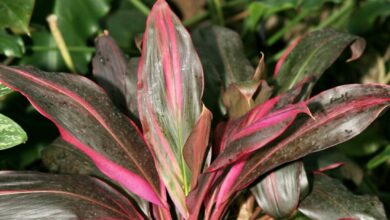Dipladenia
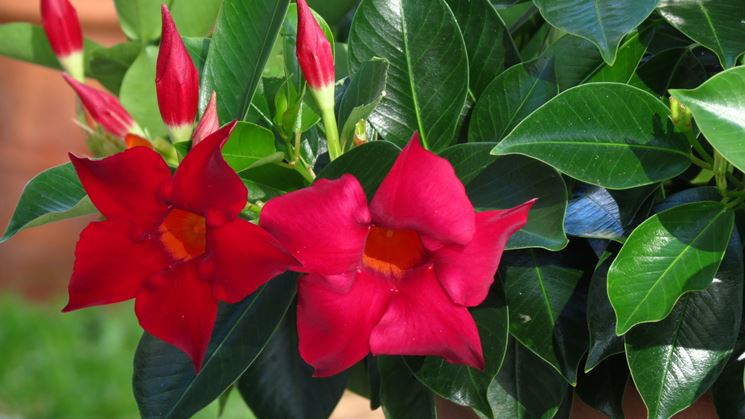
Dipladenia for the balcony
The decorative power of dipladenia is enriched by its climbing habit, which allows the plant to become an elegant decorative element that develops around the supporting elements of the balcony or terrace. However, it is advisable to allow climbing growth on fixed elements of the external space only in areas with a mild climate, where it is possible to leave the plant outside even in winter.
If not, it is better to use mobile gratings that can allow the plant to be transported to places sheltered from the cold. There are about 30 variants of dipladenia, which are distinguished by also clearly visible characteristics. Generally speaking, dipladenia has opposite dark-colored leaves with full margins, which create a fascinating contrast with the large, tubular-shaped flowers.

Dipladenia cultivation
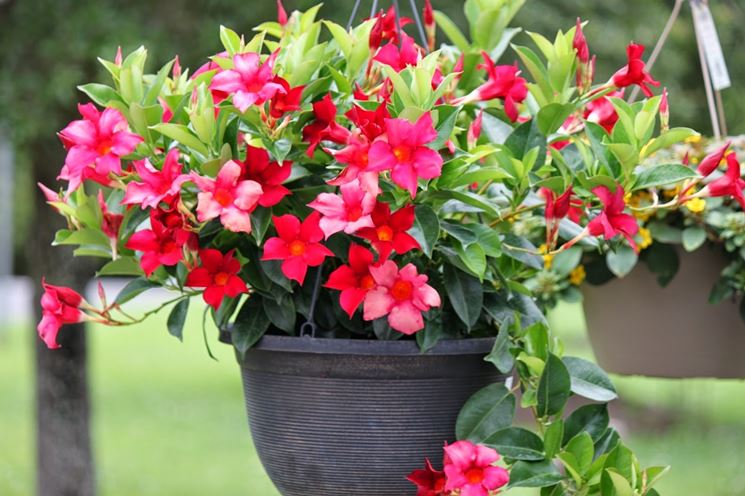
The cultivation of dipladenia is easy, as long as you have the foresight to shelter the plant with the arrival of the winter period, because it is a plant that suffers from rigid temperatures and should not be exposed to climatic conditions with temperatures below the 12 degrees.
Dipladenia can be grown in pots, with fertile soil rich in organic matter. It is a plant that particularly fears water stagnation at the root level, therefore it is advisable to place shards at the bottom of the pot to prevent water from accumulating and rotting the roots. For the same reason, watering will be frequent but not too abundant, in order to avoid stagnation even on the surface. Instead, direct sun and drafts should be avoided: it is better to recreate humid and semi-shady environments, ideal for plants of tropical origin such as dipladenia. In the autumnal periods the watering can be suspended or in any case very spaced out, to allow the dipladenia to enter vegetative rest. In the summer, however, the frequency will be higher, even if it is a plant that does not fear particular periods of drought. During the summer, a good fertilizer can be added to the watering water, to favor the development of the plant and a luxuriant flowering.
Pruning of dipladenia
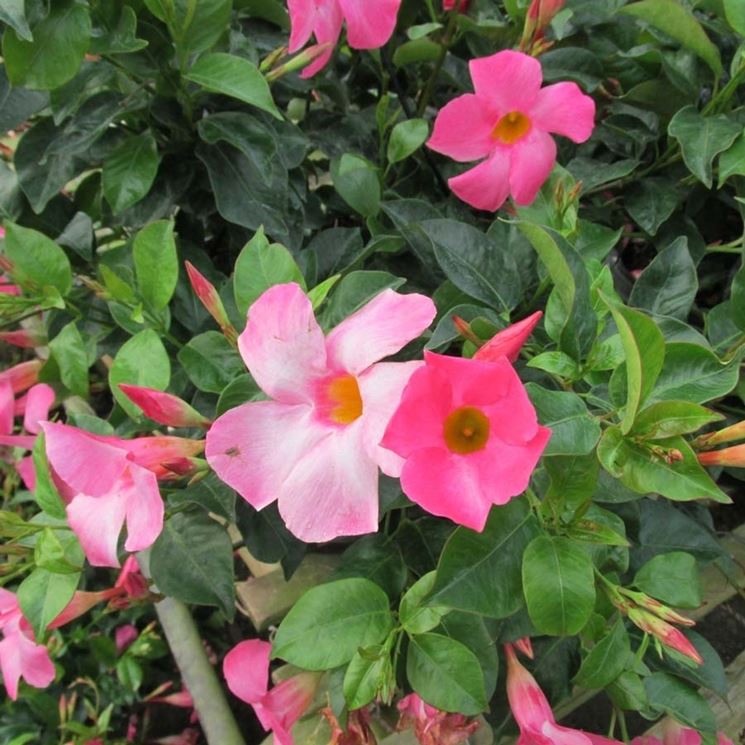
The dipladenia is a plant with a climber and ground cover development, which needs pruning to guarantee a controlled development. Pruning is especially important for plants, such as dipladenia, whose roots allow cultivation even in small spaces: in these cases it is important to know how to control the size of the plant to prevent it from invading all the available space, creating excessive bulk and becoming an element of obstruction rather than decoration. The pruning required by dipladenia is very decisive and must therefore be carried out in the appropriate period, namely the autumn one, to allow the plant the right rest. It is necessary to cut the new branches that have sprung up during the spring period at a height of about 5 cm from the base. This operation will allow the plant to have more strength and nourishment for the production of a lush and strong crown also for the following year. The advantages will also be preventive in the comparison of diseases: a healthier plant is a plant that is better able to resist attacks by parasites and fungi.
Diseases and parasites dipladenia
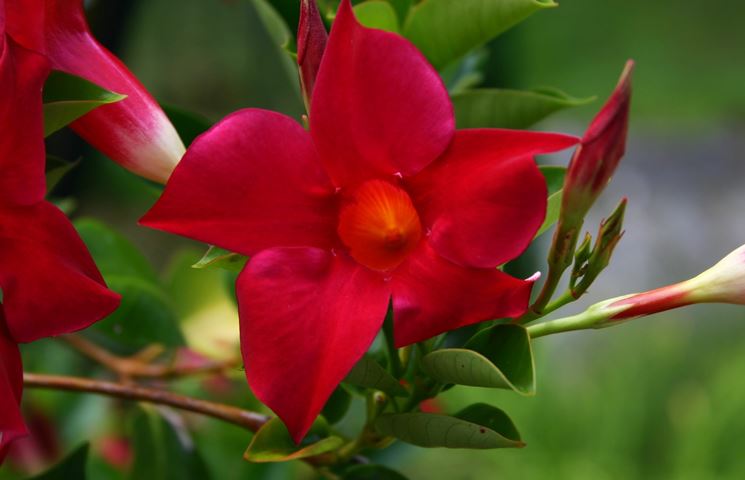
To reveal the presence of pests or diseases in progress, in the case of dipladenia, are mainly the leaves: observing them is the simplest and most immediate method to understand if something is wrong and if the plant is at risk. From the leaves, yellowed or hanging, it is possible to detect an incorrect cultivation: in this case, increasing or decreasing the watering according to the needs of the plant will be enough to bring it back to an optimal state of health. However, the case of fungal and parasitic infestations is different: in this case, timely intervention with appropriate products is often the only solution. The causes can be different, as well as the visible manifestations: if the leaves are sprinkled with small dark spots it could be a red spider, a small parasite capable of causing considerable damage to the plant. The cottony cochineal is also very widespread, whose name is easily explained by observing its presence on the leaves, which will manifest itself as small white patches with a cottony appearance. Eliminating the parasites present on the leaves is not easy: if the infestation is at an initial stage and therefore in a limited area, it is sufficient to eliminate the parasites with a cotton swab soaked in alcohol. Otherwise it will be necessary to intervene with specific products and with the chemical batch, if necessary. The fundamental aspect is to be able to eliminate any parasite present, to prevent the infestation from spreading and progressing again, putting the survival of the plant itself at risk.

